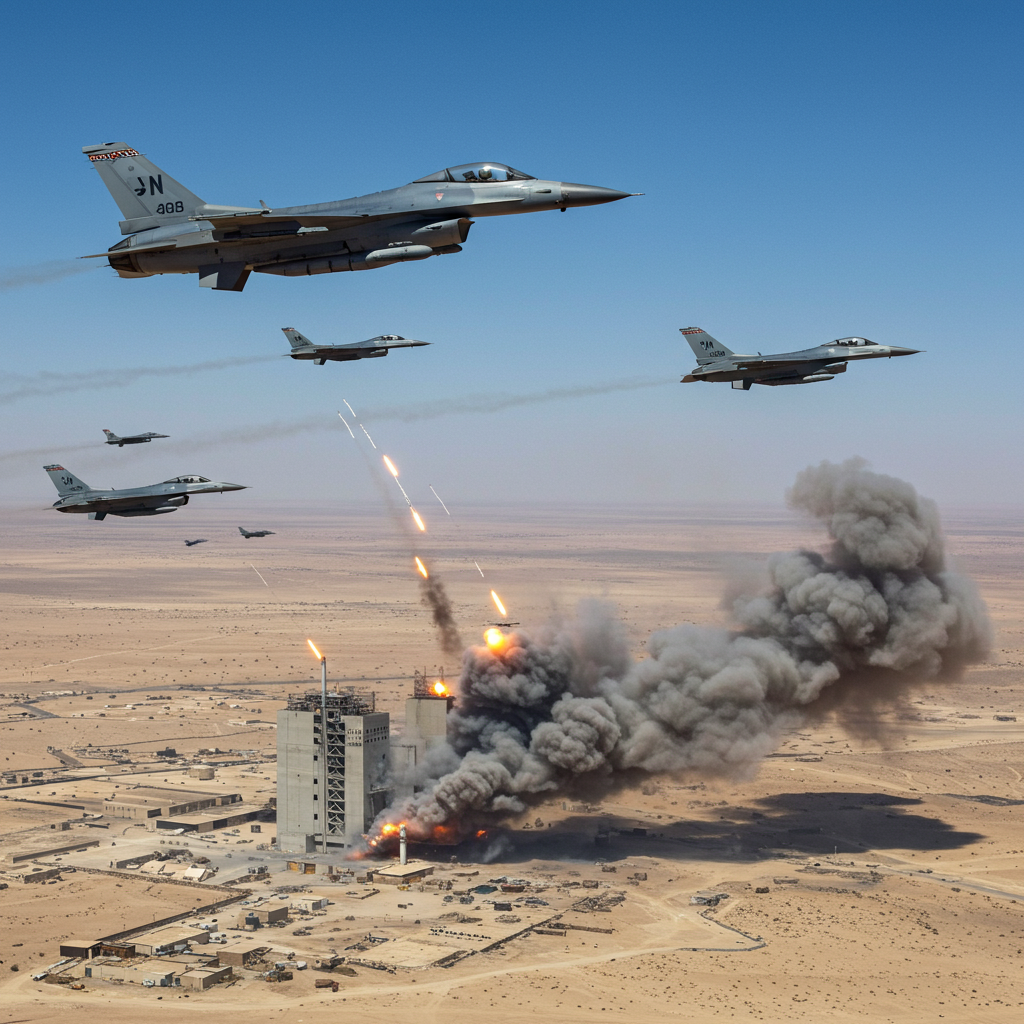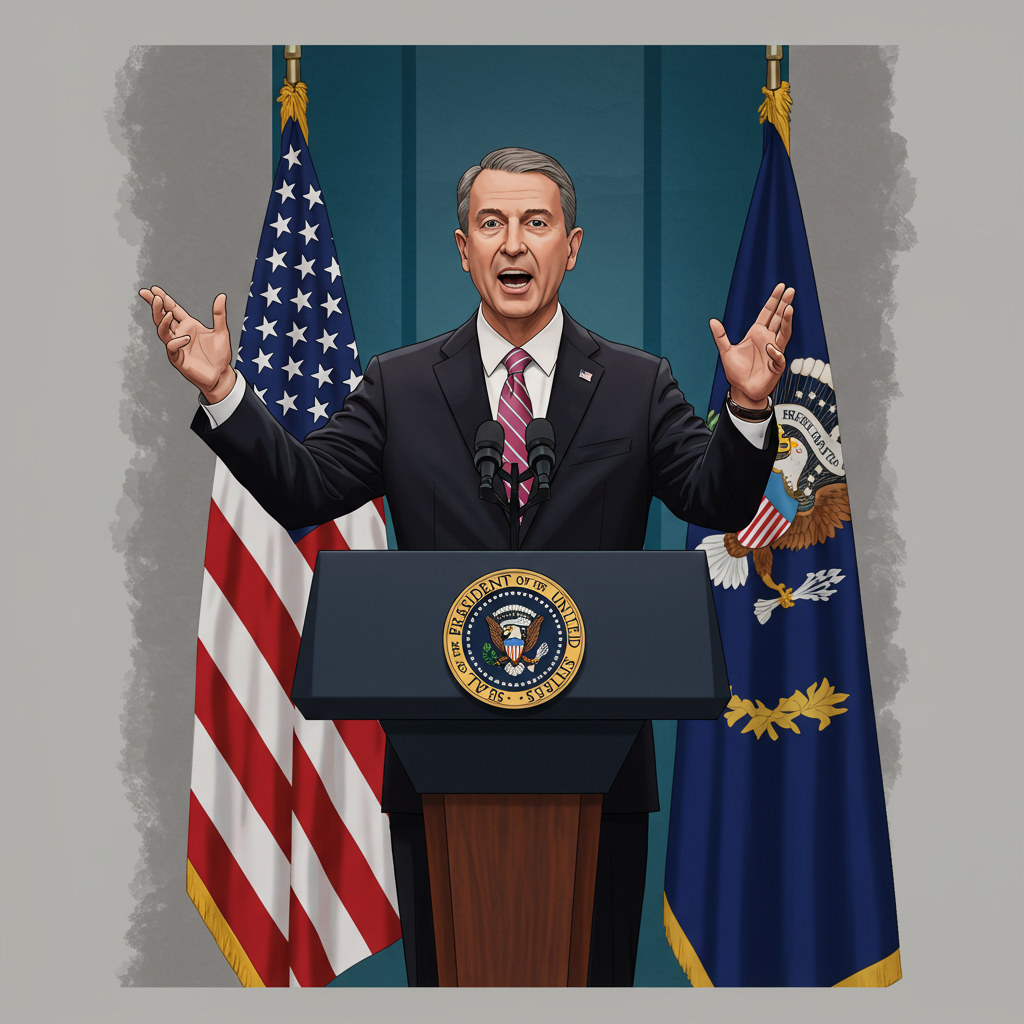Escalation in the Middle East: US Military Strikes Target Iran’s Nuclear Program Amidst Growing Conflict
The conflict between Israel and Iran has intensified dramatically, with the United States military launching direct strikes on Iranian nuclear facilities, reportedly targeting key sites at Fordo, Natanz, and Isfahan on Sunday. This unprecedented direct U.S. involvement follows a week of escalating exchanges and comes as Israel’s military leadership signals preparations for a potentially “prolonged campaign.”
United States Enters the Fray
Former President Donald Trump confirmed the U.S. military action via social media and later in a White House address, describing the strikes as a “spectacular military success.” He asserted that Iran’s nuclear enrichment capability had been severely targeted, claiming the deeply buried Fordo facility was “completely and totally obliterated.”
According to details reported from conversations with the President, the assault on Fordo involved the deployment of six powerful GBU-57 Massive Ordnance Penetrator (MOP) bunker buster bombs. Other sites, including Natanz and Isfahan, were reportedly struck by 30 Tomahawk missiles launched from submarines. The GBU-57, delivered by B-2 stealth bombers, is specifically designed to penetrate deeply fortified underground targets, marking a potential first combat use for the weapon.
President Trump issued a stark warning to Iran against retaliation, stating that further U.S. strikes could follow with “precision, speed and skill.” He cautioned that failure to cease attacks on Israel could lead to “tragedy for Iran, far greater than we have witnessed over the last eight days.”
Israeli Prime Minister Benjamin Netanyahu praised the U.S. decision as “bold,” expressing confidence that it “will change history” and acknowledging that the U.S. had achieved what “no other country on earth could do.”
Iran confirmed the attacks, with Foreign Minister Abbas Araghchi calling them “outrageous” and warning of “everlasting consequences.” The Atomic Energy Organization of Iran acknowledged the hits on Fordo, Isfahan, and Natanz but insisted its nuclear work would continue. Iranian officials also later claimed they had evacuated the targeted sites “some time ago.”
The United Nations Secretary-General expressed grave alarm over the “dangerous escalation,” warning that the conflict risks spiraling “out of control” with potentially “catastrophic consequences.”
Israel’s Military Actions and Outlook
Prior to the U.S. strikes, Israel’s military announced its own significant actions. On Saturday, Israeli forces reported striking an Iranian nuclear research facility near Isfahan and conducting targeted attacks that killed three senior Iranian commanders. An anonymous Israeli military official indicated the Isfahan strike targeted two centrifuge production sites, part of Israel’s stated goal to dismantle Iran’s nuclear program. Iran’s deputy governor for security affairs in Isfahan confirmed the damage but reported no casualties at the facility. The International Atomic Energy Agency (IAEA) also confirmed the latest attack.
Israel also continued its campaign of targeting key Iranian military figures, reporting the killing of a Revolutionary Guard commander linked to financing and arming Hamas, and another Quds Force commander responsible for weapons transfers to Hezbollah and Hamas. These follow earlier strikes that killed the heads of Iran’s armed forces, Revolutionary Guard, and ballistic missile program.
As the conflict rages, Israel’s military chief spokesman, Brig. Gen. Effie Defrin, conveyed that the Chief of Staff has instructed the army to prepare for a “prolonged campaign.” This indicates a strategic shift towards a potentially lengthy engagement aimed at degrading Iran’s military and nuclear capabilities.
Iran has responded with waves of drones and missiles towards Israel. While Israel’s multi-tiered air defenses have largely intercepted these barrages, preventing significant damage in most instances, they have resulted in casualties. Israeli officials estimated taking out over 50% of Iran’s launchers but acknowledged Iran still possesses capabilities.
Nuclear Tensions and International Concerns
The core of the conflict revolves around Iran’s nuclear program. While Iran maintains its program is peaceful, it is the only non-nuclear-weapon state to enrich uranium to 60%, a level nearing weapons-grade, and has restricted IAEA access to its facilities since the U.S. withdrew from the 2015 nuclear deal. Both Israel and the Trump administration have demanded an end to Iran’s enrichment program.
The head of the U.N. nuclear watchdog, Rafael Grossi, has voiced serious concern, particularly warning against attacks on Iran’s nuclear reactors, like the Bushehr commercial power plant, where a direct hit could lead to a “very high release of radioactivity.” Tensions escalated when a senior adviser to Iran’s Supreme Leader reportedly threatened Grossi following the war.
Diplomatic Stalemate and Regional Impact
Diplomatic efforts to de-escalate have stalled. Talks in Geneva yielded no breakthrough, though European officials expressed hope for future dialogue. Iran’s foreign minister indicated openness to diplomacy but not with the U.S. while Israeli attacks persist, demanding aggression cease and the “aggressor is held accountable.”
The potential for wider conflict remains high. Iranian-backed Houthi rebels in Yemen have threatened to resume attacks on U.S. vessels in the Red Sea if the U.S. joins Israel’s military campaign. Regional players like Egypt and Turkey have called for negotiated solutions, with Turkey offering mediation. Germany closed its embassy in Tehran. The U.S. has begun assisted departure flights for its citizens in Israel and advised those in Iran to leave.
The human cost of the conflict continues to mount. Reports from a Washington-based Iranian human rights group indicate hundreds killed and thousands wounded in Iran, including civilians. In Israel, dozens have been killed and hundreds wounded by Iranian projectiles. Within Iran, internet access has reportedly collapsed, making communication and updates difficult for residents.
U.S. Political Landscape and Authority
President Trump’s decision to order strikes on Iran faces scrutiny, particularly from within his “America First” base. Prominent figures like Steve Bannon, Tucker Carlson, and Rep. Marjorie Taylor Greene have voiced concerns regarding potential U.S. involvement in what they see as another potential “forever war,” a stance conflicting with a core tenet of the MAGA movement. This highlights internal divisions within the Republican party regarding foreign intervention.
The legal basis for the strikes without specific congressional authorization also remains a point of debate under U.S. domestic and international law. While presidents possess broad authority to use force, experts question if substantial, prolonged engagements or actions against another state’s nuclear program qualify as self-defense under international law without clearer UN Security Council authorization or a more direct threat against the U.S. itself. The action has reignited discussions about the balance of war powers between the President and Congress.
As Israel prepares for a potentially long conflict and the U.S. takes direct military action, the situation in the Middle East remains volatile, with significant risks of further escalation and unforeseen consequences.


